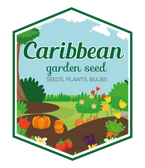
SUNFLOWER flowers Seed (All Sorts Mix ) Different sunflower varieties
FAST & FREE SHIPPING
Over 90% of our orders are processed and ship out by next business day.
We are currently processing and shipping most orders within 1-3 business days. (backorders not included) Due to high demand during the peak months of January to May, orders may require additional time for packaging /shipment.
Free shipping for orders over $54.95. Excludes live plants, fresh products And Stackable Black Plastic Nursery Crate
Shipping and handling charges will cover outbound freight and packaging materials. Fees are applicable to all orders, based on total order value pre-tax. Expedited services can be selected at Checkout with extra fees.
- Free shipping to lower 48 states on orders $54.95+
- (Most Items), excluding live plants, plant bulbs, and black plastic nursery crate.
- Safe Seed Pledge
- Satisfaction Guaranteed
- Select your desired size and/or color from the available options.
An awesome array of different sunflower varieties.
The Sunflower All Sorts mix is a beautiful combination of some of great varieties. A perfect blend of size and beauty will make any landscape breathtaking!
Sunflower All Sorts Mix Includes:
- Autumn Beauty
- Grey Stripe
- Lemon Queen
- Sungold Tall
- Sungold Dwarf (Teddy Bear)
- Sunspot Dwarf
- Velvet Queen
Planting
Sunflowers grow best in locations with full sun; they prefer long, hot summers to flower well.
Though they're not too fussy, sunflowers thrive in slightly acidic to somewhat alkaline (pH 6.0 to 7.5).
If possible, put seeds in a spot that is sheltered from strong winds, perhaps along a fence or near a building.
Planting Sunflower Seeds
It's easiest to sow seeds directly into the soil after the danger of spring frost is past. Ideally, the soil temperature has reached 55 to 60 degrees F.
Plant the large seeds no more than 1 inch deep and 4 to 6 inches apart in well-dug, loose soil after it has thoroughly warmed, from mid-April to late May.
A light application of fertilizer mixed in at planting time will encourage strong root growth to protect them from blowing over in the wind.
Experiment with plantings staggered over 5 to 6 weeks to keep enjoying continuous blooms.
Give plants plenty of room, especially for low-growing varieties that will branch out. Make rows about 30 inches apart. (For very small varieties, plant closer together.)
When the plants are six inches high, thin them to two feet.
If you see birds scratching around for the seeds, spread netting over the planted area until seeds germinate.
Care
Water plants deeply but infrequently to encourage deep rooting.
Feed plants only sparingly; overfertilization can cause stems to break in the fall.
Tall species and cultivars require support. Bamboo stakes are a good choice for any plant that has a strong, single stem and needs support for a short period of time.
Pests
Birds and squirrels will show interest in the seeds. if you plan to use the seeds, deter critters with barrier devices. As seed heads mature and flowers droop, you can cover each one with white polyspun garden fleece.
If you have deer, keep them at bay with a tall wire barrier.
Sunflowers are relatively insect-free. A small gray moth sometimes lays its eggs in the blossoms. Pick the worms from the plants; if you have an infestation, spray with Bt.
Downy mildew, rust, and powdery mildew can also affect the plants. If fungal diseases are spotted early, spray with a general garden fungicide.
Harvest/Storage
To harvest seeds, keep an eye out for ripeness. They're ready when the bracts begin to dry. Hang the heads upside down until they're thoroughly dry in a place that's safe from birds and mice.
For indoor bouquets, cut the main stem before its flower bud has a chance to open to encourage side blooms. Cut stems early in the morning, when the buds first start showing color and are just beginning to open.
Arrange sunflowers in tall containers that provide good support for their heavy heads, and change the water every day to keep them fresh.
Parts used:
Seeds, leaves, root
Useful components:
Vitamin A and E, tannins, inulin, levulin, magnesium, selenium, B-1, B-5, phosphorous, tryptophan, copper, B-6, manganese, folate, fiber, iron and zinc, amino acids and Omega-3 Fatty Acids
Medicinal use:
Sunflower seeds are considered to have antioxidant, anti-inflammatory, diuretic and expectorant properties. They can help reducing the symptoms of asthma, osteoarthritis and rheumatoid arthritis and help in cases of bronchial, pulmonary and laryngeal problems. They can be applied as an addition to therapy of colon cancer, high blood pressure and migraine headaches. Due to their magnesium content, Sunflower seeds can also act as prevention against heart attacks and strokes. Sunflower leaves can be used as an infusion to treat high fevers, lung problems and diarrhea. As a poultice, Sunflower root is used against snake and spider bites.
Safety: Some people are allergic to sunflower foliage, and may react with a skin rash. Some herbs could react with certain medication. Therefore, it is highly advisable to consult your doctor before consumption of any herb.
SUNFLOWER
Helianthus annuus
Common name: Sunflower
Latin name: Helianthus annuus
Other names: Common Sunflower
Family: Asteraceae
Materials: ike no other plant,vegetable,fruit,craft,your,style,in the gaeden,annual,flowers,seeds,recipes,Orange,Jerk sauce cooking Select your desired size and color from the available option
HOW TO GROW GUIDE
LET OUR CUSTOMER SPEAK FOR US

![[Seeds] - Caribbeangardenseed](http://caribbeangardenseed.com/cdn/shop/files/gift-card-gift-card-1_1024x1024_dfa857db-9150-4315-a362-7f0bb3fb9c47_60x28.png?v=1722895789)








